Idea by
Calvin Chua, Aurelia Chan
Spatial Anatomy
Call for ideas 2021
Green Agora
Green Agora
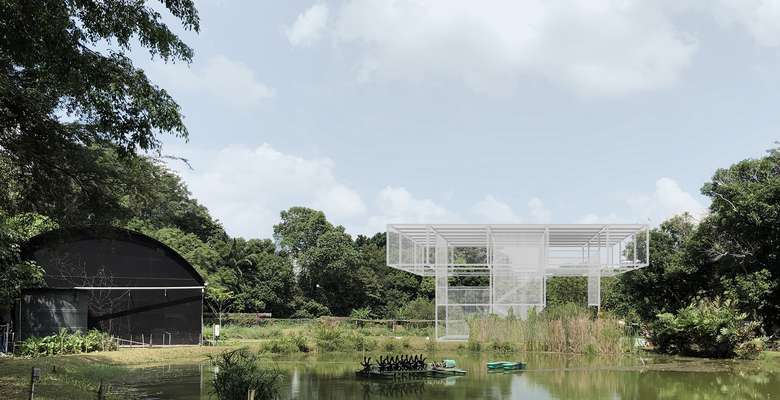
- Systemic changes
An adaptable infrastructure, Green Agora activates everyday spaces in the community to meet food production needs at the neighborhood scale.
Addressing the convergent concerns of food security and community wellness, Green Agora is both a statement and prototype that bridges the gap between the technocracy of the ‘smart city’ and the everyday spaces that we live in. Conceived as a living structure, Green Agora acts as a neighbourhood clubhouse that allows native plants to grow on its modular aluminium structure and steel meshes. Combining experimentation in construction and growing techniques, Green Agora embodies a new type of nature-oriented public space.
Public ideas on the use, form and location of Green Agora are crowdsourced through a downloadable design toolkit. A set of scenarios is designed to spark deployment of the structure in various urban contexts (mechanised farms, derelict urban sites, community centres), including defining a kit of modular elements for ready use.
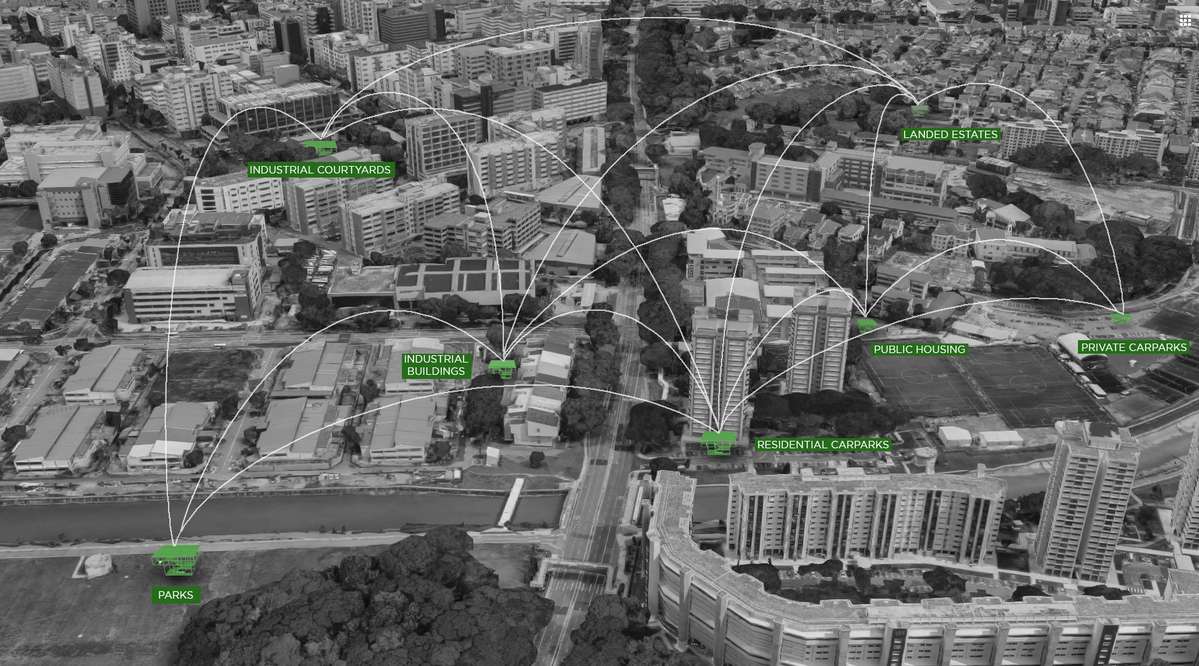
Green Agora facilitates decentralisation to liveable and mixed-use neighbourhoods. A reduction of human movements as a preventive measure to the spread of virus implies a decentralisation of business activities from the CBD and key shopping districts to the regional hubs and the heartlands. The diversification in the use of (public) space becomes increasingly important to ensure the social-economic sustainability of local neighbourhoods.
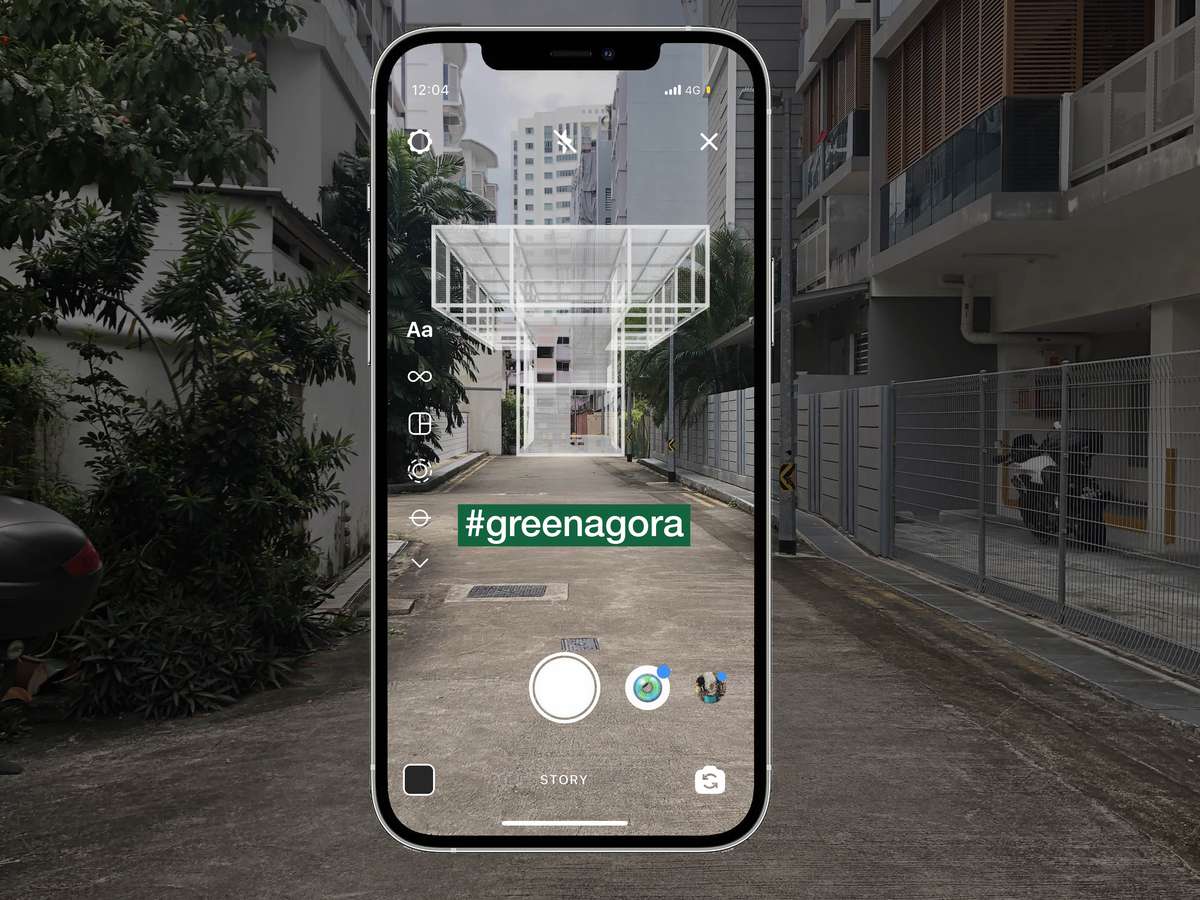
Envisioned as a catalyst for conversations and dialogues to take place in the heartlands, the Green Agora will serve as a collection point and an expression of the issues around food security and also people’s dreams and thoughts around what would help them live differently. A crowd-sourced toolkit engages responders to kickstart simple designing activities to activate forgotten pocket spaces in their neighbourhoods, and sustainably utilise them for food security.
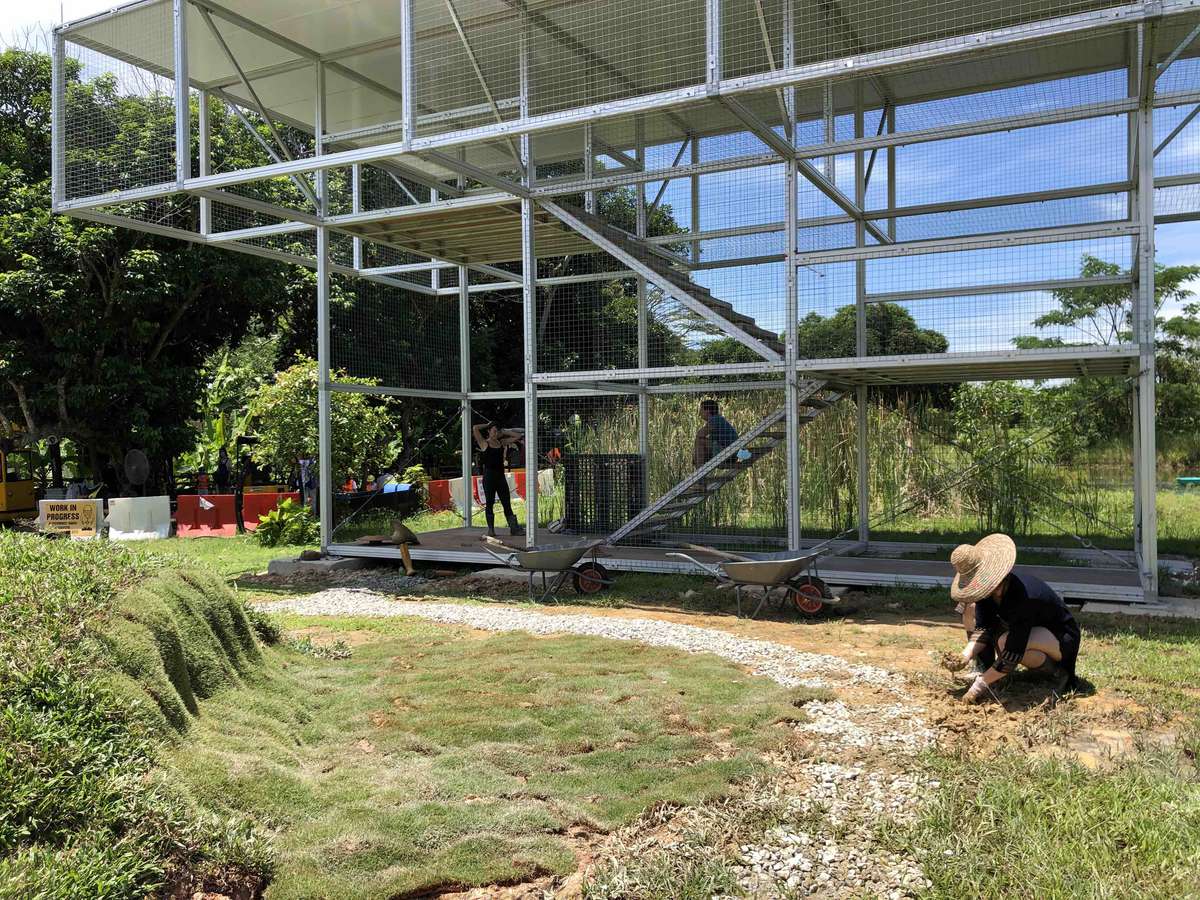
Green Agora brings the community together for good from initiation to implementation. Green Agora was curated and designed by Spatial Anatomy, built by modular experts The Shelter Company, hosted by a community farm Ground Up Initiative, and co-funded by the participatory design collective re:ACT. Relying on community volunteers for its landscaping, planting and harvesting, the Green Agora welcomes and anchors place-based residential initiatives, which is an emerging trend in Singapore.
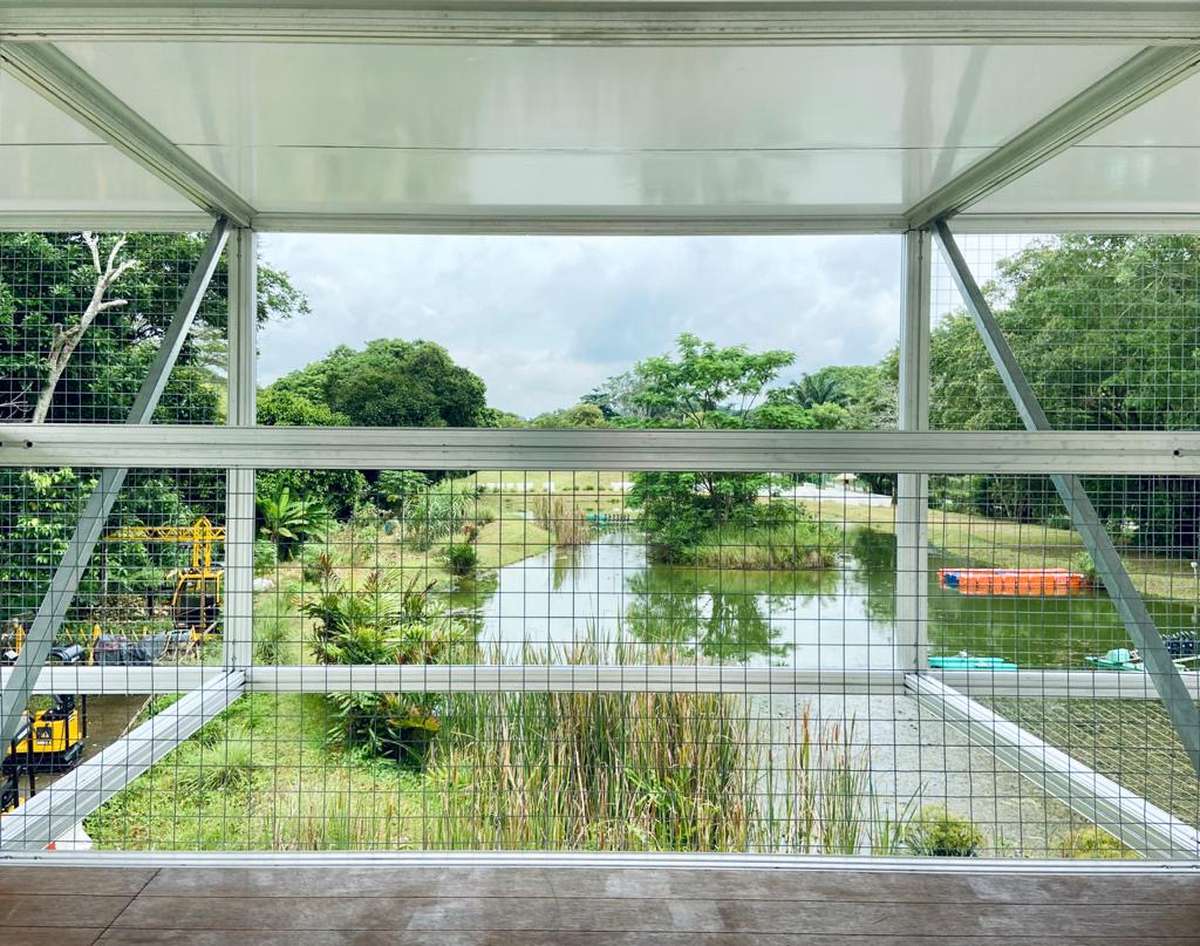
The pavilion is a catalyst of a new sustainable architectural typology: An ecologically sensitive outlook on live-work-play, under the changing conditions of dwelling, working, mobility, consumption and social structures.A delicate framework of outlines and mesh is gradually subsumed under a growing facade of creepers. The structure comprises a framework of patented aluminium modules appearing as a wireframe box perched atop another, and lightly clad with steel mesh.

Green Agora was showcased during Archifest 2020 at Ground Up Initiative’s Kampong Kampus over a period of 6 months. As a prototype, the Green Agora utilises the patented Tubelar modular system developed by The Shelter Company. Tubelar has been used for hospital extension wards in Singapore and for rapid deployment of COVID-19 medical centres. The Green Agora is designed for pop up installation across cities both to demonstrate sustainability concepts and to create useable public space.
Green Agora
Green Agora

- Systemic changes
An adaptable infrastructure, Green Agora activates everyday spaces in the community to meet food production needs at the neighborhood scale.
Addressing the convergent concerns of food security and community wellness, Green Agora is both a statement and prototype that bridges the gap between the technocracy of the ‘smart city’ and the everyday spaces that we live in. Conceived as a living structure, Green Agora acts as a neighbourhood clubhouse that allows native plants to grow on its modular aluminium structure and steel meshes. Combining experimentation in construction and growing techniques, Green Agora embodies a new type of nature-oriented public space.
Public ideas on the use, form and location of Green Agora are crowdsourced through a downloadable design toolkit. A set of scenarios is designed to spark deployment of the structure in various urban contexts (mechanised farms, derelict urban sites, community centres), including defining a kit of modular elements for ready use.
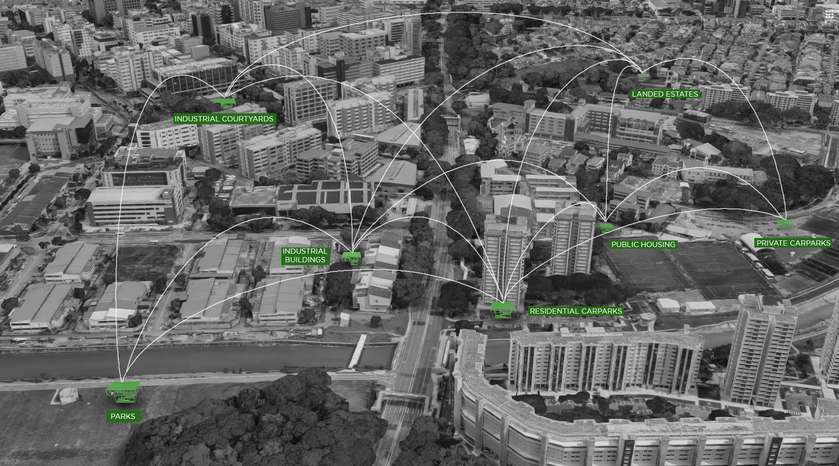
Green Agora facilitates decentralisation to liveable and mixed-use neighbourhoods. A reduction of human movements as a preventive measure to the spread of virus implies a decentralisation of business activities from the CBD and key shopping districts to the regional hubs and the heartlands. The diversification in the use of (public) space becomes increasingly important to ensure the social-economic sustainability of local neighbourhoods.
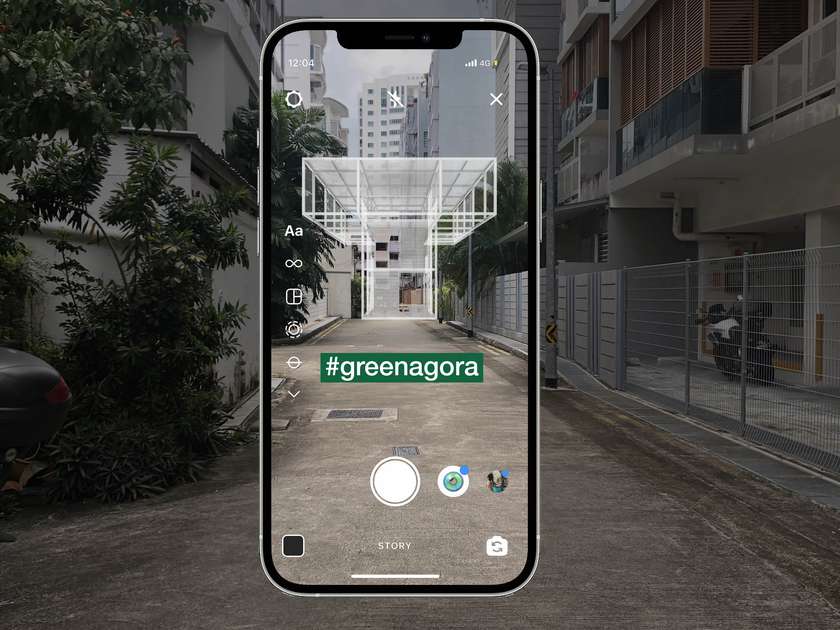
Envisioned as a catalyst for conversations and dialogues to take place in the heartlands, the Green Agora will serve as a collection point and an expression of the issues around food security and also people’s dreams and thoughts around what would help them live differently. A crowd-sourced toolkit engages responders to kickstart simple designing activities to activate forgotten pocket spaces in their neighbourhoods, and sustainably utilise them for food security.
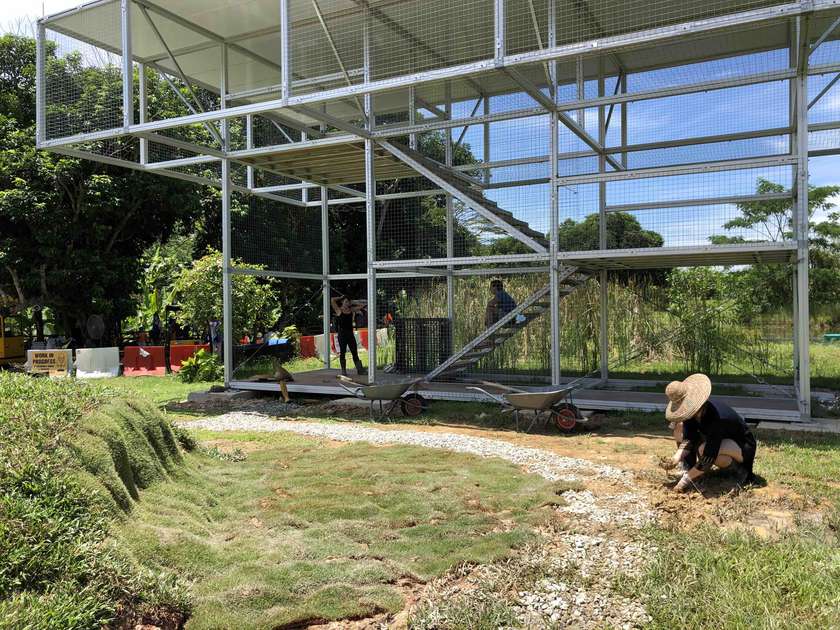
Green Agora brings the community together for good from initiation to implementation. Green Agora was curated and designed by Spatial Anatomy, built by modular experts The Shelter Company, hosted by a community farm Ground Up Initiative, and co-funded by the participatory design collective re:ACT. Relying on community volunteers for its landscaping, planting and harvesting, the Green Agora welcomes and anchors place-based residential initiatives, which is an emerging trend in Singapore.

The pavilion is a catalyst of a new sustainable architectural typology: An ecologically sensitive outlook on live-work-play, under the changing conditions of dwelling, working, mobility, consumption and social structures.A delicate framework of outlines and mesh is gradually subsumed under a growing facade of creepers. The structure comprises a framework of patented aluminium modules appearing as a wireframe box perched atop another, and lightly clad with steel mesh.

Green Agora was showcased during Archifest 2020 at Ground Up Initiative’s Kampong Kampus over a period of 6 months. As a prototype, the Green Agora utilises the patented Tubelar modular system developed by The Shelter Company. Tubelar has been used for hospital extension wards in Singapore and for rapid deployment of COVID-19 medical centres. The Green Agora is designed for pop up installation across cities both to demonstrate sustainability concepts and to create useable public space.